HVAC/R and its Role in the Building Envelope - PODCAST TRANSCRIPT
June 6, 2025 at 1:56 p.m.Editor's note: The following is the transcript of a live interview with Malco Tools’ Director of Engineering, Greg Guse. You can read the interview below, listen to the podcast or watch the recording.
Intro: Hello and welcome to MetalTalk from MetalCoffeeShop. My name is Heidi Ellsworth and we have a very special MetalTalk today that is all about HVAC-R. And I have to tell you, I am really excited about this MetalTalk. It is giving us an opportunity to really explore other trades on the building envelope and really how it all works together with roofing, with metal buildings, with metal siding, you name it, all the things that go along on MetalCoffeeShops.
So before we get started, a few housekeeping. This is being recorded and it will be live within 24 to 48 hours. So you can share this, get this out to your fellow employees, friends and family because I tell you what, this is something as we are looking at the economy, on everything that is happening, diversification is critical right now and this is something that really could help your business. Also, the chat is open, so please let us know where you're from, who you are and give us some information. And also feel free to ask questions as we go through.
So let's get started. First of all, I would love to introduce our guest today who is Greg Goosey, who is the engineer with Malco. I'm going to let him introduce himself. I have had so much fun preparing for this webinar with Greg. Greg, welcome to the show.
Greg Goosey: Thank you Heidi. Thanks for having me today. I appreciate it. One of the things that's not on your slide there quick of my background, I grew up on a farm, so this Tim Works stuff actually was in my blood long before I ever got into tools, had to do my own sheet metal stuff on the farm for roofing and all that kind of thing. So I've been deep in this since I was what? Five, six years old. So I've got some history.
Went to school for automotive engineering, which was really cool. It was a mix of mechanical and electrical engineering. So I really understand all the different types of things from tools and that sort of thing, how things work. I worked for a company called McNeilus Truck and I designed the largest refuse truck that was designed at that point in the world, which is cool to hear.
And then I worked for a couple different generator manufacturers, Cadilight and then Kohler. And when I was at Kohler I actually got into their rental division. So I got into their HVAC, doing all their rental sizing. Sized everything from the tents that are on the PGA golf course, so they had the right air conditioning in them. I did backup for cooling, for needs at different plants, drying, so the dehydrating basically for the medical type professions. I've worked with nuclear, I've worked with Secret Service, so I've had a lot of fun doing a lot of other things.
And then I got back into more of the mechanical side of things, worked for Alliance Laundry out of Ripon, Wisconsin. And then most recently I was at Yellow Jacket and now Malco Tools. And Malco Tools, as most of your roofing people know are huge into roofing tools.
Heidi J. Ellsworth: Yes.
Greg Goosey: But we were bought by a company called Aspen Group that is actually big into all things HVAC as well. So the chemical side of the business and all the tools that go with it, all the valves, all that stuff, condensate pumps, the whole nine yards. So we've really diversified our portfolio, which is great for me because that is exactly what I love doing. Every day I get to play with different toys at work. It's all the new things, all the different things. Whether it is for sheet metal, whether it's for HVAC, whether it's for pulling water out of a unit someplace, whether it's condensate type pumps, that sort of thing, so it's a new and exciting day every day, which is just awesome. So I'm so happy to be here.
Heidi J. Ellsworth: Man, you just made me smile, Greg. I'm so excited for this topic because I can hear the passion, hear everything that you're doing. So I do want to remind everybody that the chat is open and please let us know where you're viewing from and ask great questions as we go. As you can tell, he would love the conversation and would love any questions that might come your way.
Okay, Greg, let's start at the very beginning. As we can say, the very beginning is a great place to start. Let's just talk about HVAC-R. What is it? Can you go through the terminology and the overall just to give that bigger picture?
Greg Goosey: Yeah, so it's funny you ask it that question in that manner. So HVAC and the -R is a world of acronyms. So I hope not to get into too many of those today, but forgive me, I've been in this industry for a while and it might happen. HVAC-R itself is an acronym and it's the H is for heating, which is any type of way of generating heat.
So oftentimes we think about natural gas or propane type where it's a fire burning for heat. And that's one type of heating. You have electrical heating where you're heating up an electrical coil and you're doing that sort of heating. And then there's different ways of moving that heat as well. So boilers also fall into that heater category, where you're heating water and then moving that someplace else to be able to use it. I've seen where you've got localized, so like rooftop units. I've seen where you have centralized, so you have a hot water plant, basically a big boiler system that's moving throughout an entire campus. I've backed up and worked with many of those companies doing all those sorts of things. So that H is a much broader category than just something as simple as the word heating, right?
Heidi J. Ellsworth: Yeah.
Greg Goosey: And then we get into ventilation. One would think, well, that's simple, that's just air. It is. But how do you move the air? Ventilation you see there in the photograph on the slide, we've got that nice beautiful fan, that's your squirrel cage fan that's in most of your RTU type units. They're in most of your home furnaces moving your air and that's a way of moving air. But there's also where you can use the heat process, which if you think about a boiler, you're not going to push air across a tube and get anything off of it and where are you going to set that up to be able to pull the air through? So if you think about it, we've got these radiator systems that do have fans built into them in some buildings and they can pull that heat off, but again, it's the radiator that is now putting that heat in. And so that's another type of ventilation.
But then if you look at old houses and stuff, they had the hot water pipes running through the house, there was no fans on those different floors in those different rooms. So then you're using more of a convection type, a flow of your heat into the air. And so ventilation covers a wide topic of things, not just the fan. And so how you duct things, how you deal with that, some of the really old systems when you get into some old buildings and stuff actually were a natural convection process. So they would have basically ducts that ran from floor to floor to floor and the heat would just rise through the building and they would basically would heat the bottom floor and it would heat the whole building. The inefficiency part of that was the fact that you were heating the lower floor and the people upstairs were opening the window because it was so hot up there. So we've tried to get better with that and that's why ventilation plays such a huge part in the whole HVAC picture.
And then you've got the AC, which is air conditioning. And I find that topic really interesting because it is no longer about heating is taking and switching a value for a heat unit. Air conditioning is actually taking and transferring heat from one place to another place. So this industry in the HVAC world has really, really changed recently with the addition of heat pumps. They're using heat pumps where they take the hot air out of your house and they turn it into boiling water in your water heater. They take the hot air from 30 degree weather outside and heat your house to 70 degrees, because they take that heat content and they put it back into your house. So air conditioning with heat pumps is able to take that air conditioning either direction even into the cold climate to make it so that the cold gets colder, but you're really pulling the heat out of that area. And so likewise, your air conditioner in your RTU unit or in your house, it's taking that heat and it's dumping it to the outside air rather than putting it back into your building. So air conditioning is really, really fun topic to talk about.
And then you've got the last one that goes into the refrigeration, which from a sheet metal standpoint, there's not as much to touch on there, but it's basically all of your different types of systems that use refrigeration. And in the biggest application I've ever seen, I have been in a freezer that was, I don't even know how many square feet, but we drove semi-trucks in their food distribution. So they use ammonia systems and they keep that so that the semi-trucks are in a freezer while they load them. So from that standpoint, the whole building has become the freezer. So when you think about your freezer at home at night, when you go to get that steak out, this is a supersized freezer. So you could theoretically be building the whole refrigerator if you're into the metal side of the business.
Heidi J. Ellsworth: Yeah. We see a lot of that and a lot of people with cold storage and how they're working through that. And Greg, I think one of the things that everybody, no matter what our folks out there are doing, whether it's roofing or full metal buildings or sheet metal shop, preparing them, ventilation is key. Ventilation as you were describing that, no matter if you're heating, cooling, refrigerating, whatever, it needs to be ventilated. So let's talk a little bit about that ventilation strategies within HVAC-R.
Greg Goosey: Yeah, so like the first one we have there's your natural ventilation and that's passive. You're opening windows, you're using vents, you're basically using the air that's naturally flowing through to be able to cool. And one of the neat parts of this is if you think about if you've ever had a window open or something and you hear that whistling, it's because you have a high pressure versus a low pressure. So you're actually getting a much bigger cooling effect because that wind is whipping through at a high enough speed that it's actually pulling the heat out of your house or out of your building.
So I've been at many facilities where they do a lot of pouring of ore. And the biggest thing you can do there is move air through that building. So having that natural openings to be able to get that heat out of there in the summertime when it's 100 degrees outside and they're working with that molten metal, we're talking this is upwards around three, 400 degree air in that building. And so to have that natural ventilation, that air moving through there is key for those types of facilities. Even in the wintertime, those doors are pretty much wide open when you drive by those facilities. So that one is really a key. And not a lot that you do from an overall layout with sheet metal, but it is the design of the building to get the air to flow through at that point. So that's where natural ventilation fits in.
When you talk about mechanical ventilation, that's where we get into more of the being powered by fans. And the key to that one is the flow. So how much air am I trying to move and then what am I trying to do with it? So if you look at your duct work as you're pushing the air through the system, it has to be sized properly, because if I've got a system that's supposed to move 100,000 CFM and I try to put that through a one-inch tube, for one, it's going to want to blow that tube apart, so it's got to have a really thick wall on it, but for two, it's going to be an extremely high-pitched whistle at that point.
So it's one of those, in the mechanical world, you want to have it more open, but not too open. Because if you open it up too much, your air will actually stagnate in that duct and it won't move. So you'll lose all your efficiency for your heating and everything else because the air will be stalled. So it's just going to sit there and the fan will spin, but it's not moving in any air because it's such a massive amount of opening. So this one gets really tricky and from a roofer standpoint or even an installer in the HVAC world, they have to make sure they're doing their calculations right to make sure they got their duct sized right and they get that all properly put together. And that's what gets you into that bottom category, the balance ventilation.
So in order to have a fully balanced system, you want it so that the supply system is moving the air properly and it's moving it through the building into the furnace or into the RTU and then back out again. Or likewise the air conditioner if it's not got a furnace built in, which is a rarer case, but that does happen. Our mini split product is one of those where it's an air conditioner only basically and it's mounted on the wall in your building. But that sort of thing, when you look at the industry, that's what they're talking about with balance ventilation. So you want it so that it's even.
And the other part of that, what it creates is if you think about if I have a wide open tube and I have a narrow tube, where's the air going to want to flow? It's going to want to flow through the big tube. And so that room that I have on that little tube isn't going to get any air through it, so you got to have it so that you have a return system as well. So the ventilation is typically duct work and duct work is a sheet metal.
Heidi J. Ellsworth: Right.
Greg Goosey: So it opens the door as we're talking sheet metal tools and the whole sheet metal avenue. This ventilation part is a huge part of what we're trying to deal with from the sheet metal world. So even if you're a roofer, you're listening to this program today and you're going, "Well, why would I care about HVAC other than they're putting a mount up on my roof and so I have to put that mount on there to mount whatever bracket or whatever on there?"
Well, this still is something that's an option for you to look at. As we keep driving through the economy and we see changes, this is another avenue that you can potentially even sub yourself out into a different avenue and say, "Hey, yeah, I could do the duct work in a building." As long as you're sizing it proper and the company that you're working with is doing the sizing, whoever's doing it, you're sizing it proper so you got flows understood and figure it out and you have a balanced ventilation system, it's a win for everybody.
Heidi J. Ellsworth: Yeah. That really is. And when you're looking at that on this, able to diversify it or even partner and we're going to talk more about that here in a little bit. And so let's talk, same thing. You talk about the ventilation and how it works, but if things are not right, if it's not working, talk a little bit about that.
Greg Goosey: So one of the things, if you think about if you've got leaky ducts, the air's going to bypass where it's supposed to go, you'll get that stalled air because it's going somewhere else. It's that huge opening that shouldn't exist. And so if you look at the pictures there, there's actually been a ruling basically pushed through that is now a code that's being enforced pretty much everywhere in the United States where you have to use that top picture there as a mastic. It's a goop that dries up solid and you use that to plug any leaks. Or the bottom picture there, it's got the tape on all the seams. And so it's one of those where you're able to seal off things using another mechanical type of device, which is the mastic or the tape, but it's per code because if you have those leaks, you're not getting the air where it's supposed to be. If you're not getting the air where it's supposed to be, you lose efficiencies, you have potential health concerns. So when you think about a leaking duct, there's a place there for ingress of dust or metal or any of that stuff, anything that's in the air is now going to go into the system because it's exposed.
And the big reason you have ventilation in a building is so that you're keeping the building fresh air and breathable environment for the people that are inside of it or animals or whatever that's inside that building. So that's where I wanted to switch a little bit to sealed facilities. If you had a perfectly sealed up building, in theory, you'd have a very efficient system because all the air would move around the way it's supposed to, you'd be fantastic, except for a completely sealed facility for one is almost impossible because we have natural leaks, whether it's through the glass that is there or whether it's through doors that open and close. Air curtains will act as doors, but they're still going to allow air through. So having a completely sealed facility isn't really even a likelihood.
But it is one of those where if it was completely absolutely sealed, it would also be a problem because as you breathe, you put out CO2 and eventually you'd end up putting too much CO2 into that area and you would have a problem as well where you couldn't breathe and have all kinds of other issues. But a decently sealed, properly sealed is where we're going with this facility would actually allow you now to move the air the way it's supposed to. And that ups your efficiency. And so it's one of those, like I said, perfectly sealed, doesn't exist, but perfectly sealed for what we need it to do. That's where we want to go with this system.
Heidi J. Ellsworth: That makes total sense. And as you're putting through, I think again, as we bring this back to a lot of erectors who are out there watching this, who maybe are thinking about getting involved sheet metal shops, all of this is important to understand. And I think also looking at the refrigeration. And I'm just interested in this overall, so talk to us a little bit about that role of the R in HVAC-R.
Greg Goosey: So yeah, when you look at it like I talked with the big buildings, you've got those huge buildings that are basically a huge refrigerator, but the understanding the whole refrigeration cycle and the different components that are in it and that sort of thing. As you look at it, what a refrigerator or an AC unit is trying to do or is in process of doing, is it's taking the hot from an environment and it's putting it in a different environment. So where we have, like we had talked, the heaters are actually producing heat from burning something, whether it's electricity in a coil or whether it's the gases, coil-fired, oil-fired whatever, it's taking that heat and is putting it right into the system through some sort of a transfer right there.
With air conditioning, you are literally taking that heat through a compression and expansion cycle. So if you think about as you have a boiling pot of water on the stove and you open that up, you have that big woof of steam, it gives you a very hot effect, right? Well, that's how it works in the refrigeration cycle as well. As you're pushing through, you take this liquid and it's pushed through and it's really high pressure and it's really hot and it's a liquid. And so you push it through and then what you do is you give it that chance to expand.
And if you've ever used one of those aerosol cans where it sprays out and you hold your finger over that tip for a while, you'll feel how cold it gets. Even though it's just air, it's extremely cold. Well, it's because of that rapid expansion that gives you that cold feel, but it's not actually producing cold, it's taking the heat away from your finger. And so that's why when you get into the refrigeration cycle, it's so much different than the heating cycle. Heating cycle, you're burning something to do it. Air conditioning cycle, you're trying to move that heat over to another location.
And so whether you're trying to do the cooling and preserving the products like your foodstuff there or if you're trying to do a house or a business or any of those things, what you're trying to do is take that heat that's inside and move it to the outside. So as we get into systems and I talked a little bit there about the mini split, but a lot of these builders are putting roof units on, rooftop units or coming into a building and putting air conditioning units in and having some sort of a system. The heat pump is now where it's a reversible, so it can turn the cold cycle to where the hot cycle was and the hot cycle to where the cold cycle was. So you can have actually efficiencies there.
And the other part that's really cool is it doesn't take one kilowatt of electricity to move the equivalent of one kilowatt because you're transferring now, you're not creating that heat. It doesn't take a kilowatt to move that power, so as you get into heat pumps, AC units, you will find that you have a higher efficiency rate versus what you would have in the burn because the furnace has got to also take that exhaust gas out of the building and so it takes heat with that exhaust gas. This is 100% contained system, so everything is happening in that system. The heat that's in the compressor is minimal, but the efficiencies that you gain because you're compressing and cooling liquid and then re-expanding it again, it makes it so that it's actually a much more efficient system. So you're seeing efficiencies here well over 100%.
And so that's where we get into what they call SEER rating, SEER, which is another acronym, but that goes into the cooling capabilities of a heat pump. So it's one of those that, like I said, I'm trying to keep acronyms out of this, but there's so many in this industry that if you're trying to understand what is that, what does it mean, that's where this gets to be really, really interesting and a really important part of it because unlike the heat cycle, you're not taking and consuming something, you're just transferring it.
Heidi J. Ellsworth: Yeah. Now for sheet metal shops, as they're looking at this, is there different requirements for that, a lot, we were just talking about all the duct work, the metal duct work, as when we start getting into refrigeration, is there still a lot of metal forming and a lot of metal duct work that goes on or is there a little bit different?
Greg Goosey: There is depending on the system. So the mini split system basically mounts to your wall. So it comes through the wall, very simple, nothing there for sheet metal. But as you get into much larger where you're trying to do buildings and they're doing the heat pump type technology, you're going to have to move that hot air out of a building if it's truly mounted strictly in the building.
But the other side of this is they will use heat exchangers and they'll have it so that makes it so it makes cold water or something like that and they'll move that medium to your heat exchanger and then that heat exchanger will potentially have duct work that'll run off of it. And be similar to what an RTU setup would be, the rooftop unit, again, acronyms, I'm sorry. Just thinking of that as I'm saying it. But the rooftop units have the duct work that goes over the whole plant. You'd have the same thing with the heat exchanger type system as well.
Heidi J. Ellsworth: Wow, interesting. Interesting. Well and all of this leads to the push that we're seeing with from building owners, from developers, general contractors for energy efficiency and sustainability. So let's talk a little bit about that in HVAC and the whole within that metal building for our erectors out there.
Greg Goosey: Yeah. So we touched a little bit on it with the SEER rating from the AC side of things. But then when you get into the heating side of things, you see that little picture over there, there's an energy guide with every furnace. If you took that same picture back in the 80s, if you hit anywhere over an 84 to 87% efficient furnace, you were doing pretty good. And what that means is the fuel that it puts in, the heat unit that will actually go back in through the burner and back into the actual heat exchanger into the conditioned site, so whether it's a house or a building or whatever. And so we were at 84% back not that many years ago and we thought that was pretty good.
You see this tag in this picture, it's 96%. We have cleaned up a lot with our burn on our natural gas propane fuel systems. And so it's become super critical there with how they get air in and out of those units. So making sure that we have good air source there and that could potentially have to be plumbed in as a piped system too, depending on where they're putting this. But then you have that fresh air, you're burning it, you're causing this 96% complete burn to heat ratio, so for every drop of oil I'm burning or natural gas or propane that I'm burning, 96% of the energy content that's in there is now going into that facility. So massive changes.
And that's where potentially as you're getting into these buildings, they might be putting smaller furnaces in there, they don't need such a big furnace that they had before. So then, okay, do we change duct size? That's the next question. Because as you don't have to have so much, you've got a hotter system because there's more fuel burnage going on there to get you that heat, then it's a question of how do we want to set up and do our heat transfer? So are we still doing as many rooftop units? If we are, the quantity is the same. Well we've got 96% efficient versus 84% efficient. We don't need as big for one option or the other option is not as many. So then we potentially would have to replumb buildings differently or at least make transitions between what we had to go to a much smaller system.
So there's opportunity there too, even as they're installing these systems to put in different alternatives, because the equipment is potentially smaller or there's less of them in the building. So it also changes duct work routing because before you had it covered this little zone, well now maybe it covers this much more zone. So your duct runs could be longer. And we've gotten much better too as we talked before with the balance side of things on balancing systems. So we say, "Okay, we now know that we've got a static pressure at the actual unit of X and if I go to this duct and this duct and this duct, they should all be the same. And if they're not, I can put turning vanes in there and make it so I turn off some of that air that's going to that duct and redirect it to the other ducts and I get a much better efficiency of my system." It's still burning the same fuel, it's still moving the same amount of air, but it's moving it in the right places where it needs to go. So that's all part of that heat transfer.
When you get into the AC side of the business, coil cleanliness is extremely important because that's like we talked about, you're taking the heat out and putting it in another location. If your condensing coil or your evaporator coil is dirty, it's not going to work as well. Both of those are a copper tube with the aluminum fin typically application. And so you want to make sure they're completely clean. And so the cleaner they are, the more heat they can transfer just because of the way they're made, they've got those tubes running through aluminum fins that pull that heat into the refrigerant or likewise take the cold off of the tubes and put it into your air that you're trying to condition the building. So cleanliness of those coils is huge.
And going back to even the clean burn, you'd want to make sure that you're having the system so that it's giving you the cleanest burn and that means your burners also, you want to make sure all that stuff is clean, any of the transition where you're transferring the heat or the cold, to have that cleaned on a regular basis. And there, even though it's not a sheet metal application as such, could be some opportunity for you to be able to go do that as well, as that doesn't take any extra certification or anything like that, it's just a matter of being able to clean product.
Heidi J. Ellsworth: So if you're already there doing possibly roof inspections or overall building inspections, this is an awesome opportunity to be able to also offer, "Hey, we can do coil cleaning, we can check your system for efficiencies." So one other, I have a couple more questions here actually, Greg. One is really, as you're talking about energy efficiency and sustainability, that is really bringing home to me that this is whether it's new construction, but also a lot of retrofit because we have a lot of older buildings that need energy efficiency, so there's a lot of opportunity as buildings are being retrofitted. Is that correct?
Greg Goosey: Oh, absolutely. And that's part of it too. So as you know, the duct work in the past didn't have to have mastic on it, so it might not have. It didn't have to be taped, so it might not have been. So as you're going through you could say, "Okay, well yeah, they're changing out the furnace. Could I do the additional on the inside of sealing up that system, rebalancing that system? What does that look like? Is that something that you'd be capable of? Do you have the tools where you can actually check airflow and pressure drops and see that I've got this system much more balanced for them?"
And really add a value to them because now they're going, "Oh, I thought I had to replace my furnace, but you went through, you taped up everything and I got air moving where it's supposed to move and it's doing what it's supposed to be doing. You've set the dampers where they need to be and now everything's working much more properly. I don't really need to replace that furnace." Or if they do, then it might now be able to go to that smaller size. You know?
Heidi J. Ellsworth: Yeah. And some of that energy efficiency can help offset the cost of the retrofit. It really makes sense. We did have a question. Thank you, Tom. And he said, "Thoughts on phenolic," phenolic, I hope I'm saying that right, "on duct work? Transferring the air is the most efficient way?"
Greg Goosey: If you're talking overall from duct work, it depends on what your building is, what you're trying to do with it. So I've done a lot of environmental stuff where for a theater application for instance, I did have where I did the wrap duct where I did insulated duct work in basically the rafters of the theater, because you're going to have the issue where the condensate would cause a huge problem, it'd be dripping on the crowd basically down below. So each application is going to be dependent on what type of ducting system you want and whether you insulate it, whether you don't. But you have to look at that from a what is the building setup like and what does that look like? If you have a high humidity and extreme cold, you're going to want to protect anything from dripping if that is an option.
But if you're doing just a generic layout of a building, if you think about it from that standpoint, if I do duct work that is all steel duct work and do all my tubing and lay it all out or ducting I should say and lay it all out. The temperature that's around that duct is usually pretty much the same as what it is in the environment around the duct, so I'm not going to see a big temperature swing. So in most cases, you don't have to do anything special with it. If you wanted to use the wrapped duct where it is doing more of the plastic style where you're using insulation and that sort of thing, they can actually be tied together into the same system. So you can do a steel run for part of it and you can do insulated duct in other parts. You can use the flexible duct that is more of the plastic type duct as an option so you can use both.
From the avenue that we're looking at is what can the sheet metal guy do? But yeah, to know that you can do both. And down in the south we actually see a lot of duct board, which is actually fiberglass with aluminum facing on it. And so they use that for their runs. So they're using that instead of your standard steel duct. Now it's still a process. You still cut things, you still put them together, it's just a little bit different than maybe the tools you'd have in your tool bag as a standard person doing more of the metal type of work. So it's definitely an option. When you ask the question, does it make sense to do these other options? Potentially, but if that's not in your tool bag and you're just looking to do something extra, I would say stick with the sheet metal side of things, do that type of duct work and let somebody else bid out more of your plastics and your duct board, the glass board.
Heidi J. Ellsworth: Interesting. Great question, Tom. Thank you so much. Okay, so that leads us actually great into talking about HVAC-R and with metal, the integration with metal buildings. And so for thinking of our audience out there, whether you're an erector, general contractor, roofing, siding, all of this, it has to be integrated. So let's talk a little bit about that, Greg.
Greg Goosey: Yeah, so if you think about a lot of the RTUs are sitting on the roof, a lot of the other units that you're seeing a unit sit outside of a building, if it's like an office area and you're doing architectural face work, whatever at that facility, if they needed or wanted assistance and you had that capability to be able to run that duct inside for them, you've just created an extra income source. You're already at the site, you already have the tools. And so it's another way to say, "Yeah, I could help you get that part of the job done." And all they got to do is come in, run a little bit of copper tubing to both sites, get their electrical connected, which they might be working with the electrician on site already and now they just basically are dropping equipment in and running and you've done the rest for them. So it's a great opportunity because you have these tools, they don't have to invest in it.
And one of the things that everywhere I've gone and taught people and talked with people, there's not enough people in these trades anymore. So to have that capability to say, "Hey, I can diversify. I'm already at this job site, your cost structure is already lower than theirs because they're going to have to bring that guy out to do that sheet metal work," and he might not be the tech-savvy guy that's going to go do the furnace install, so now they're bringing another guy out for that. Well, if you're already out there doing the other work and you can add this on, you've saved him, plus he doesn't have to try to find that guy and hire that guy. So it's a really cool ad for your business.
And it's not anything way outside the realm of what you've been doing. You work with them to figure out, make sure you got the duct work right, you work on the layout a little bit. But from that standpoint, once you have that, it's not that much different than a, slightly different, but not that much different than working with the roofing or the architectural that you're doing from an overall sheet metal. A lot of these tools cross over. A lot of how you do the seams and stuff are self-explanatory. If you know how to do one, you can work with the other. It's really an option to just say, "Yeah, I've got this opportunity. It's been presented in front of me to grow my business or to give me another source of an income off of that same job I'm already working."
Heidi J. Ellsworth: I think that's key. Off the same job really making yourself available to the contractors who are, like you said and I think you're 100% right, every trade needs more people and it needs more skilled labor.
Greg Goosey: And we're seeing that across the board as we're in the HVAC market, we're in the roofing and siding and gutter side of the business, we're doing the architectural, we're doing all these different types of tools and we're getting that same feedback from everybody. How do we make it so that people enjoy it more, that they like to get out there and do these things? And then how do we make it easier for them? Because it is one of those, I was actually, not to digress too far, but I was just in a training of teachers this last week and one of the things was bringing in the VR world. And so the virtual reality training. And trying to do things to bring people to these crafts again. And so if you've got this art and you've got extra capacity, you're definitely in demand out there.
Heidi J. Ellsworth: Yeah, that's so great. So we have another great question here, Greg. It's from Pamela. Thank you, Pamela. Does that code for mastic apply to doghouse and can you provide that to me signed? And she says, "A roofer annoyed with a sloppy HVAC contractor."
Greg Goosey: I believe it does that, that mastic does apply to everything. I'd have to check and see what the code number is for that. I don't remember off the top of my head. But that was something that was enacted here in the last, I want to say it was three or four years, I don't remember. It's not terribly old. So yeah, you might be upset because they already had put that in, but if they're still doing it, they're definitely not meeting code, because that's been pushed across pretty much the whole country from what I understand. I don't think anybody is able to take that regulation and do less. Usually you can do more, but you can't usually do less. And so it would surprise me if someplace is still allowing them not to, at least do something. It's not mandatory that it's mastic. They have to tape it if they don't use mastic though.
Heidi J. Ellsworth: Okay, Pam, Pamela, please feel free if you want to email me heidi@rooferscoffeeshop.com. I can get you in touch directly with Greg and find that information for you. So I love the question. Thank you so much. Okay, so we talked about the metal buildings and really now let's talk about what we've been talking about is how sheet metal shops, roofing contractors who have metal forming equipment, whether it's portable or in-house, have the tools, how you can start adding on? You can see through this picture some great examples of the type of metal forming that can be done with HVAC. So Greg, let's talk through how can our contractors get more involved?
Greg Goosey: Yeah, so if you look at those components that are there, these are all different things that are used in different duct work pieces as you go through the system. So you've got reducers, you've got elbows, you've got all that stuff. Some of these shops are set where they can actually roll tubes and they can actually do a rolled, if you look at a 90, there are swivels built into those and so they have a rolled edge built in them and you can actually build your own 90s. They're not terribly complicated to make. We make a tool called a turbo crimp that would actually run on the top side of that and take your standard tube that's the same size as what everything else is and make it so it has that crimp to it, so it actually pulls some of the material out and you could slide the big end into the small end at that point. And make it so your ducts connect together. That's one that goes in your drill. So it makes it really fast and really easy to use.
But so all of this stuff can be made at a metal shop where they're doing metal work anyway. They could do any of these. They're not terribly complicated pieces to make. And then the really cool part is when you're talking, what's really going into these buildings is long runs. So you've got duct work that is big pieces that you can make a section that's a 10, 12, 20 foot piece and be able to hang it up in the roof and you could actually preassemble those if you wanted to and bring them out to a site. It gives you a great opportunity to use the equipment you already have that you're potentially using to make your roofing steel. This would give you another option to be able to make some long pieces of duct work and be able to install big complete sections when you get there. And the variety that comes with that. So as you're running a metal shop, you've definitely got the opportunity to make any and all of these components in-house as well.
Heidi J. Ellsworth: Yeah. So as you're looking at that, Greg, it seems to me like there'd be a couple different options. So if someone is out there listening right now and saying, "We don't really want to get into the installation, but we just want to fabricate. We want to fabricate." So that's also an opportunity getting with these general contractors and letting them know that you have those fabrication and can work with other trades, that's another possibility, right?
Greg Goosey: Oh, absolutely. Absolutely. Yeah. So if you look at any of this duct work, this stuff is basically a standard piece that somebody is making currently that's sitting here. But if I needed an elbow that just was six inches longer, to have a custom elbow made up would be crazy. But if I've got a metal shop that I can work with that can make me a standard elbow, they can make me a six inch longer elbow without any thought to it.
It's one of those where if you get into their toolbox of people to use, you can do that custom stuff, not charge them a whole lot more than what you were charging them for the standard stuff and make the product that they need in almost an immediate basis, instead of them having to do a special order from some house someplace and try to wait for it to get shipped in. And then, oh, well, it was six inches in the wrong direction and now I need to order a new one again. So you can present it as, "Hey, I can save you money by working with me to make exactly what you need."
Heidi J. Ellsworth: Right. Locally.
Greg Goosey: Locally.
Heidi J. Ellsworth: And be local and fast.
Greg Goosey: Yeah.
Heidi J. Ellsworth: I think it's such a and I know a lot of roofing contractors that have sheet metal shops and also metal building obviously, metal farmers who have sheet metal shops who are doing a lot of HVAC. It's just part of their everyday business. It's a great way to look at it.
Greg Goosey: And again, a lot of the tools crossover between the two. So you're not buying extra tools to be able to do that. You're using the same stuff that you're currently having. So yeah.
I love it. Okay and we're going to go on to that. I think I jumped ahead with my question, Greg, sorry, but this is all about diversifying your business, if you have a sheet metal shop or you want to get into a sheet metal shop or you just want to get involved more with HVAC within the building trades. What are some of the, how does this work diversifying their business?
Greg Goosey: Yeah, so just before we get to this slide, I know there was a couple of things on the last slide that we didn't quite touch on and one of those is licensing. So if you are looking at getting full-on into the HVAC world, you are going to want to make sure you're licensed to operate in your state region, whatever. There's different requirements. Even on what equipment can be installed in the different areas, so all things that you'd have to work with your local area on. And then the other thing is if you deal with refrigerant at all, you need to become 608 certified as well. So you can order refrigerant, so you can work with the systems, any of that. It comes with its own set of training, but it's one of those where if you're looking at full-on adding this to your lineup and being able to do it all, you'd have to have that 608 certification as well.
So to then go to the next slide if you want to jump back. Sorry about that.
Heidi J. Ellsworth: No it's my fault.
Greg Goosey: Yeah, no problem. So as you look with everything you're doing, we've touched on many times already. You've already got the tools. So if you potentially look where that guy's standing, you see all the duct that is sitting around him in that picture right there. This stuff is not, when you're talking commercial, it is not the little three-inch tubes. You're talking two foot, four foot pieces. As you put it together, typically they'll do that as an L, not a box. There are some that go as boxes out to site, but basically it's two L's that then fit together on the site. So that's where you could do a longer piece, as long as you can still get it up into wherever you're putting it and make it so that it's custom, you get rid of some of those seams, you don't have to put all the seams together again. So that's a nice part of it as well.
But again, it uses the same sort of tools. It's one of those where if you know how to work with sheet metal, you can build the duct work, you can do all that stuff. It's not something that you're stepping way out if you're just doing the duct side of thing. Again, as you get into options and you're looking at how do we make this work? One of the things that's really cool is there's NATE, North American Technical Excellence classes that are offered by pretty much every tech school. There's offered, many people offer NATE classes as manufacturers, so you can get NATE certified classes. And you get that little certification badge on your sleeve that also says, "Hey, I've been through these trainings and so I'm now certified in that."
And then also, HVAC Excellence is actually where I was teaching teachers on Monday and it's one of those where they do very good job of training the whole industry on HVAC, so all the different aspects of it. As we've touched on heat pumps, as we've touched on boilers, as we've touched on the ammonia systems, they're training on each and every component depending on what detail you want to get into, what type of buildings you're working on. So if you're always building those commercial refrigerated spaces and you want to get into more of working with those ammonia systems and get certified for that, you can go through and get trained by these types of companies as well and get that information upfront to have that good understanding.
Heidi J. Ellsworth: One of the things I just really want to point out is getting the relationship with Malco. Getting with a tool. You have all the tools for HVAC. I know at SkillsUSA, vocational schools, you are all very active. So a lot of that too is looking for that training and also on knowledge through working with your tool manufacturer.
Greg Goosey: Yeah. And I have to say, hey, I wish you were accurate on that statement. We don't have all the tools. And that's the part I always enjoy talking with contractors, talking with the people that are out in the field to ask that question of what did you have to make for yourself? Because I would rather help everybody by making that tool for them, so they don't have to try to figure it out, because that's not really the industry you want to be in, making the tools that do your job. You want to have the tools to do your job.
So as people come up with ideas of things that, Hey, this would make this a lot easier," I know our website has it where you can go in and you can log an idea and somebody will follow up with you. If it's something that, "Hey, that might help more than just one person." See if it's an idea that we can vet out and figure out if there's a good way to make that tool, that's more economical because you've had to put something together to do the job. But yeah, Malco, I wish I could say we had all the tools, but we have a very good majority of the tools and we're going to keep working to make more options.
Heidi J. Ellsworth: I love it. That's your fun job. That's what you get to work on this year.
Greg Goosey: Absolutely. That's the toys I get to play with all the time.
Heidi J. Ellsworth: I love it. I love it. Well, I'm just for everybody out there, we have about 10 minutes left. We are going to wrap this up on, as we talked about, the building envelope and the importance of all of this and bringing it together. But if you do have questions, now is a great time. Keep asking him, so that we can get those to Greg before the end of the hour. Greg, the building envelope, importance and function. This is really bringing it all together. Help us understand.
Greg Goosey: Yes. So you wouldn't necessarily think that the building plays a big part in it, but it does. It is like your refrigerator. If you remember growing up when you're sitting there looking for whatever it is in the refrigerator and you get told not to let all the cold out of the refrigerator, it's the same with the building environment. If your building isn't built properly, you don't have insulation, you've got too many windows on a south side exposure, you're pulling all that sun energy in, you're basically leaving the refrigerator doors open. And then dad's going to yell at you because now the refrigerators are running.
So the building envelope, the function, the way it works, the options that we have now with doing the architectural steel and giving the buildings a fake facade that can keep that heat off of the building, it's crazy how far we've come and the options that we have in the steel world. Years ago, steel wasn't necessarily thought of as something you'd want to put on a fancy building. And now that the steelwork that we see out there on architectural is just crazy, but there's a lot of function other than just keep the rain off of the underside of that building. There's a lot of things that are going on to keep the heat off of the building, to be able to keep the insulation value up, to be able to make it so that you can keep the climate controlled properly inside of the building, to keep the humidity down.
Like I had mentioned, I've done backup on basically taking the humidity out of the buildings where there's pharmaceuticals. They can't have high humidity content in those buildings. And so just the design of the building, the ability to be able to hook up a temporary system, the ability to be able to hook up a permanent system, to be able to take more humidity out, keep that control. The overall importance of the building, that has never played more vital role than what it does now.
Heidi J. Ellsworth: That's so true. And really when you're looking at the interaction between the HVAC-R and the building envelope, let's bring this all together, Greg. Here we go.
Greg Goosey: Yeah. So like I mentioned, the insulation side, if you've got a building that has zero insulation and you've got a 30 degree day outside, guess what temperature your building is? It's 30 degrees inside.
Heidi J. Ellsworth: Yeah.
Greg Goosey: So it's extremely important as we talk about efficiencies. You can have a super efficient furnace, but if it can only heat the first foot of duct because it's in frozen environment, it's only going to heat that first foot of the duct and everything there on is going to be cold air blowing know. So it's extremely important to tie the HVAC system in, get it properly sized, get the airflow proper, to get it so that you got the proper amount of heat in there, to make sure you have the proper amount of insulation, to make sure that your duct work is sealed, to make sure that it's flowing all the way through the system, to make sure it's balanced, so that you've got a good balance of airflow everywhere that you're going.
And then the other one I really like there on the bottom of this is the window placement and shading effects and cooling and heating load. So years ago I had a brand new big window put on the east side of my house and it was supposed to have this film built into the window that was supposed to be UV protected and everything. And I had a fireplace sitting in the corner of that room. And I went to take that fireplace out, didn't think much of it, but it was an all hardwood floor. And for years, I could still see where that fireplace had been sitting on top of the hardwood. It was just an electric fireplace that plugged in. But I could see where it had been sitting because the sun had changed that flooring that much, that it had a completely different color where that had been sitting.
So things that you don't necessarily think about off the top of your head, you see there's huge differences in the way the building performs, just in window placement and just in how you keep the sun off the windows and how you can keep it sealed. So you're using triple pane windows instead of the old single pane windows. All those types of things, it's huge in how efficient your whole system is.
Heidi J. Ellsworth: So for all of you erectors out there who are watching this or any general contractors who are working on the full building, this is really where this all comes in for the metal buildings and bringing it all together on just some of the things to be thinking about as you are putting your designs together. I know we work with a lot of folks out there, Greg. Barndominium Lady, a lot of different folks who, I know, know all of this, but it's really important as you're working with your general contractors, this all just comes together.
So Greg, thank you so much. This has been absolutely for me, very educational. I would ask if you could talk just a little bit about Malco and the HVAC tools that you do have and some of your programs, just so people know how to get involved and how to get your tools.
Greg Goosey: So yeah, our website is Malco.com that you can go out to and you can find basically all of our tools, all of our different things. But we were actually acquired this last year by a company called Aspen Group. And so we've created a bigger Malco group that also has a lot more tools and opportunities for different things, all HVAC-Related. We have condensate pumps, we have all the different tubing, fittings, all that sort of thing from our company that's called C&D. We have all kinds of different chemicals. So we've got a company called Ace Chemicals out of Atlanta and we've got a company called Hydro Balance. So we do a lot with the cleaning of systems and all the different chemicals as you do different testing with your systems and that sort of thing. So Malco is extremely fast-growing right now.
We have also gotten much more into all of the HVAC tools that a technician would need. So if you're looking at really expanding your business and going hardcore into this, you can get all of your tools that you would need from your truck basically. Whether it's in the roofing, siding, gutter side of the business or whether it's in the HVAC side of the business, we're going to have everything for you. And as far as where they're available, we're available at any of your big contractor type stores. So as you're out there and depending on what area you're in, we're in all of those different places. We do have some stuff that we sell through Home Depot, but it's not a lot of variety. But yeah, we're out there. We're readily available.
And if you ever need to know who near you sells something, that's also available through lookup on our website to be able to find your local distributor and to be able to find out where those tools are. And one thing I love is we have that innovation tab on our website where if you have an idea, you submit it, we will look at it and see is there a need for this and how do we follow up with you and get that information? And if it's a tool that you've got, there's different avenues that we can follow as far as how complex it gets and if it's something that can be patented or not. And we'll always look at trying to help make a better tool for everybody. So we're always open to those ideas. We're always looking at that.
And like I mentioned to you, this is the part of the job I get to do where I get to play with all the toys. I get to build this stuff. I get to sit here with my team of engineers and we get to go through and figure out what are we trying to get accomplished and how can we do it in as easy few steps as possible and make it as simple for the end user as possible? We like to have our tools basically teach you as they go through, so it's one of those, we're always innovating. And you're going to see that going forward. We're going to keep rolling out new tools to help you do your job better.
Heidi J. Ellsworth: I love it. I love it. You can find all this information of course, on the Malco directories on both MetalCoffeeShop and RoofersCoffeeShop. And as Greg said, there is a tool for everything. Roofing, siding, windows, HVAC, you name it, it's there and very robust. Also, I do want to say there are checkout the directory, checkout throughout the site, Malco does a lot of great promotions, giveaways, sweepstakes, all kinds of different things for both students and for professionals. So check it out. Really cool, fun stuff.
Greg Goosey: Yeah, just to plug that too quick, Heidi, it is our 75th year. And I know if you buy a tool, you can enter into our sweepstakes as well. So something to keep in mind for all your viewers. And I think that ends here relatively soon, so they want to jump on that one quick.
Heidi J. Ellsworth: Yeah, check it out. Thank you so much. Great questions. William says, "Very well done, Greg. Thanks for sharing." I agree. This has just been so excellent. So Greg, once again, thank you so much for today's MetalTalk. It was exceptional.
Greg Goosey: Thank you as well, Heidi. I really appreciate it and I look forward to working with you guys again in the future too.
Outro: Me too. This is fun. And for everyone, thank you so much for being here on the MetalTalk today. I do want to remind you all next week we have a special Coffee Conversations next Thursday, so a week and a day. And it's going to be on steel tariffs and it's from our experts at Sherwin-Williams, so be sure to join us. That's going to be a very interesting topic. Let me tell you. Thank you all for joining us today for MetalTalk. This will be available within 24 to 48 hours, so please share it out. Have a great day.


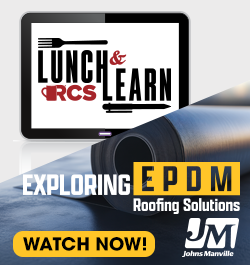
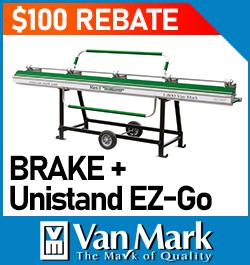
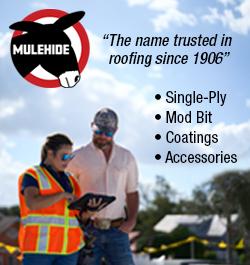








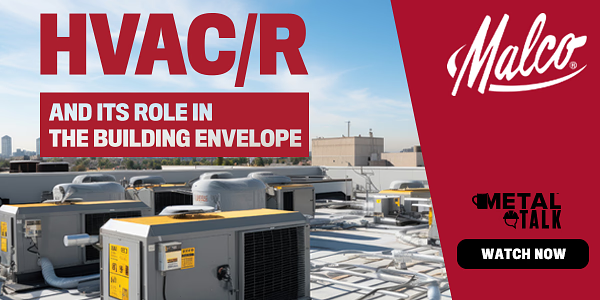


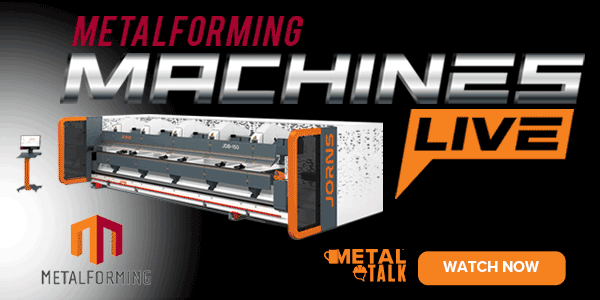

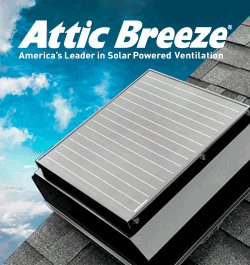



Comments
Leave a Reply
Have an account? Login to leave a comment!
Sign In